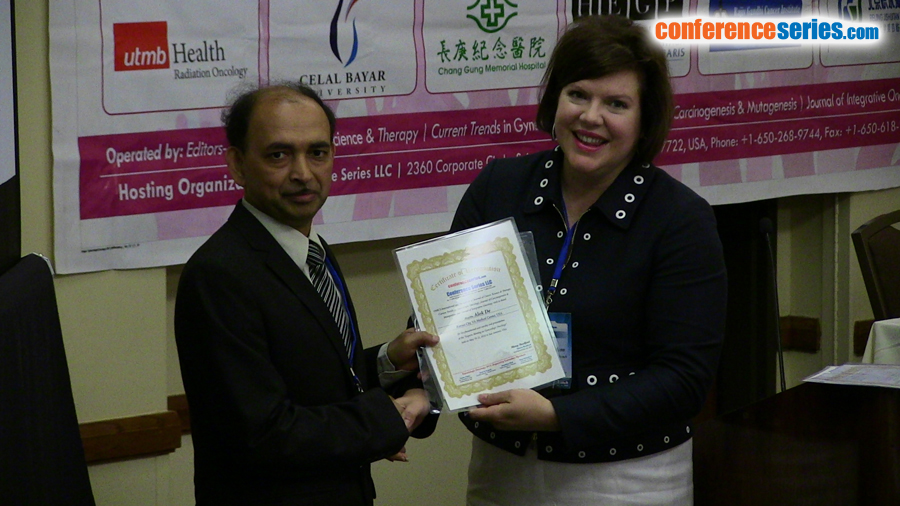
Alok De
Kansas City VA Medical Center, USA
Title: E. officinalis attenuates ovarian cancer through anti-angiogenic effects on tumor physiology
Biography
Biography: Alok De
Abstract
Background: Most (>70%) ovarian cancers (OC) develop resistance to platinum- and taxane-based therapy. Tumor microenvironment supports OC progression principally through parallel angiogenesis. Naturally occurring plant extracts block tumor progression through their effect on tumor microenvironment. Recently, we have found that E. officinalis extract (AE) has anti-neoplastic effect on OC cells while sparing normal cells. Hypothesis: AE alters tumor microenvironment and physiology through microRNA (miR)-regulated anti-angiogenic mechanism(s). Methods: OC cells-SKOV3 and SKOV3-derived mouse xenograft tumor were treated with AE. Effect of AE on SKOV3 cell physiology was assessed by proliferation assay, LDH assay. The expression of miRNAs, proangiogenic receptor IGF1R and angiogenic marker CD31 were determined. Expression of miR-375 in exosomes released from SKOV3 cells was studied. Results: AE attenuated cell proliferation, migration, invasiveness in SKOV3 cells in vitro. AE increased miR375 expression (>2,000-fold) in SKOV3 cells as well as in exosomes derived from SKOV3 cells (P<0.01). AE decreased the gene and protein expression of proangiogenic IGF1R, a target of miR-375 (P<0.001). Additionally, AE significantly attenuated the growth of and the expression of IGF1R, CD31 and proteins in SKOV3-derived xenograft tumor in nude mice. Conclusion: Increased exosomes and exosomal miR-375 following AE treatment may drive paracrine mechanism(s) to control tumor growth in OC by altering the tumor microenvironment leading to arrested angiogenesis.




